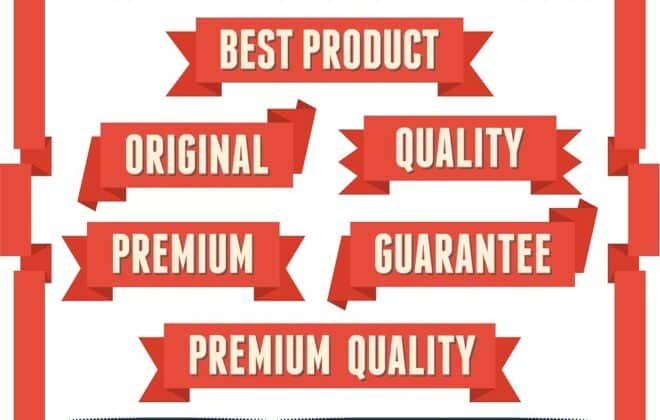
Analysis of Starbucks’ Recent Sales and Pricing Strategy Failure 🥐
In our previous analysis, we highlighted how a value-based pricing strategy has helped Starbucks achieve global success. Now, however, Starbucks’ sales are declining. Where did they go wrong? In response, they are introducing value meals and a bundled pricing strategy to win back customers lost due to high prices and service issues. The key question is, will this work in Australia and other markets? Let’s explore whether these new pricing strategies will effectively boost sales and customer loyalty.
>Download Now: Free PDF How to Improve Your Pricing Team Performance
The company is facing several challenges. Their reputation suffers due to unionisation issues and geopolitical conflicts. High prices are causing customer dissatisfaction. Poor customer service is driving customers away. Therefore, Starbucks needs a strategic approach. They must address these problems to stay competitive.
In this article, we will emphasise a strategy analysis and how Starbucks can regain market strength. First, we outline the challenges Starbucks faces with pricing and reputation. Then, we explore practical strategies such as cultural sensitivity in pricing and enhancing value perception. We argue that aligning pricing with customer expectations and improving brand perception can restore customer trust and profitability for Starbucks.
At Taylor Wells, we believe that businesses facing similar challenges can bounce back by implementing effective pricing strategies and enhancing their brand image. By the end, you know valuable insights for businesses dealing with similar issues in competitive markets.
Case Study Analysis of Why Starbucks Failed to Implement an Effective Pricing Strategy
Starbucks initially failed in Australia. The company does not conduct sufficient market research and does not understand the local coffee culture. As a result, they close over 70% of their locations. Recently, Starbucks posted its first profit in 2023. However, recent price hikes threaten their comeback, as customers might be turned away by these higher prices. Starbucks needs to reconsider their pricing strategy to maintain its progress.
Starbucks raises prices on many items, which frustrates customers. For example, a Grande Mocha in the UK is over £6, and in Australia, an Americano costs $5.30. These high prices lead to customer dissatisfaction. Additionally, Starbucks faces reputation issues due to their alleged stance on unionisation and the Israel-Gaza conflict. Poor customer service further exacerbates the problem, increasing customer dissatisfaction. Starbucks needs to address these issues to regain customer trust.
These challenges lead to a significant loss of sales and customers. Global comparable store sales decline, particularly in key markets like the US and China. In the US alone, sales drop by 3%. This significant decline shows the urgent need for a change in strategy.
In response, Starbucks introduces value meals. This bundled pricing strategy offers breakfast deals to attract customers, such as a coffee and croissant combo for $5. This approach is similar to strategies used by McDonald’s and Burger King, who have successfully used bundled pricing to attract cost-conscious consumers.
However, the key question remains: Will this strategy win back customers? Starbucks needs to ensure these promotions provide real value and make customers feel they are getting a good deal. If done correctly, this strategy could help Starbucks recover lost sales and customer loyalty.
Analysis and Recommendations on Starbucks New Sales and Promotion Strategy
Starbucks needs to rethink its pricing strategies, improve service, and manage its reputation better. Addressing these areas can help regain customer trust and boost sales.
1. Consider Cultural Sensitivity in Pricing
Starbucks must start by considering cultural sensitivity in its pricing. Their initial failure in Australia was largely due to insufficient market research and a mismatch with the local coffee culture. Australians have a strong preference for high-quality coffee from local shops, which Starbucks initially did not recognise. To correct this, Starbucks should align their menu and pricing with local preferences.
For example, they could offer more locally-inspired coffee options and price them competitively to attract Australian customers. This approach would show that Starbucks understands and respects the unique tastes of the markets they are entering, helping to rebuild its brand presence and customer loyalty.

2. Focus on Value Perception and Pricing
The next step involves enhancing value perception through effective pricing strategies. Starbucks recently introduced bundled pricing to appeal to cost-conscious consumers, such as offering a coffee and croissant combo for $5. This strategy is effective if customers perceive these value meals as providing real worth.
However, Starbucks should also benchmark these bundles against successful offers from competitors like McDonald’s and Burger King, who have used similar strategies to attract budget-conscious customers. By analysing what makes these competitors’ bundles appealing, Starbucks can refine their own bundled pricing to better meet customer expectations and enhance perceived value, which is crucial for regaining lost customers.
3. Navigate Price Ceilings
Navigating price ceilings is another crucial step. Starbucks needs to set prices that balance profitability with what customers are willing to pay. Overpricing can drive customers away, as seen with the $6 Grande Mocha in the UK. To avoid this, Starbucks should consider implementing tiered pricing. This strategy involves offering basic options at lower prices while keeping premium items for those willing to pay more.
Such an approach allows Starbucks to cater to a broader audience without crossing the price ceiling which leads to customer attrition. By carefully managing their price points, Starbucks can maintain customer satisfaction while ensuring profitability.
4. Improve Branding
Finally, Starbucks must improve its branding by managing its reputation and enhancing customer engagement. The company’s stance on unionisation and geopolitical issues has negatively impacted its image. To mitigate this, Starbucks should adopt a more neutral stance on controversial topics to regain customer trust.
Additionally, improving customer relations and service is essential. Customers appreciate brands that listen and respond to their needs. Starbucks should focus on training its staff to provide excellent service and positively engage with customers. By addressing service quality issues and rebuilding customer trust, Starbucks can foster long-term loyalty and enhance its brand image.
Lessons Other Businesses Can Learn from Starbucks Strategy Analysis
Other businesses can learn key lessons from Starbucks’ experience with value-based business and pricing strategies. Firstly, aligning pricing with customer expectations is crucial. Starbucks faced backlash due to high prices, like the $6 Grande Mocha in the UK. Businesses should ensure prices reflect perceived value to avoid customer dissatisfaction.
Secondly, introducing value deals, such as Starbucks’ bundled pricing, can attract cost-conscious consumers if they align with their expectations. This strategy offers customers a sense of getting more for their money, enhancing value perception. By focusing on these insights, businesses can develop effective pricing strategies that balance profitability and customer satisfaction, ensuring long-term success.
Analysis of How Starbucks Can Have an Effective Brand and Customer Value Perception Strategy
To effectively navigate current challenges, Starbucks must prioritise internal improvements. Enhancements in customer service, thorough market research, and strategic pricing adjustments are crucial. Strengthening customer service ensures positive interactions, enhancing customer loyalty.
Comprehensive market research informs better decision-making and aligns offerings with consumer preferences. Strategic pricing adjustments, like competitive pricing and value-based strategies, can attract and retain customers amidst market fluctuations.
Following the strategy analysis, it is evident that strong pricing teams play a pivotal role in driving success, especially in the case of Starbucks.
They analyse market data, monitor competitors, and determine optimal pricing strategies. Starbucks and other businesses must focus on enhancing their pricing teams’ capabilities to maintain competitiveness and profitability. By equipping teams with advanced analytical tools and strategic insights, companies can make informed pricing decisions that resonate with customers.
Our findings show that with the right set-up and pricing team in place, incremental earnings gains can begin to occur in less than 12 weeks. After 6 months, the team can capture at least 1.0-3.25% more margin using better price management processes. After 9-12 months, businesses often generate between 7-11% additional margin each year as they identify more complex and previously unrealised opportunities, efficiencies, and risks.
Embedding commercial capability within operations is essential for Starbucks and other companies. It involves integrating market awareness, customer insights, and agile decision-making into daily operations. A commercially capable organisation adapts swiftly to market changes, anticipates trends, and optimises resource allocation.
This approach enhances strategic agility and resilience, crucial in today’s dynamic business environment. By fostering a commercially capable culture, Starbucks can navigate challenges effectively, foster innovation, and sustain long-term growth.
Our findings show that when a business builds and embeds commercial capability across the business; bolstering its internal pricing skills and capabilities to build a sustainable pricing system, it can generate at least 3-10% additional margin each year while protecting hard-earned revenue and volume. This is at least a 30-60% profit improvement straight to the bottom line.
〉〉〉 Get Your FREE Pricing Audit 〉〉〉
Bottom Line
This article highlighted an analysis and the key strategy for Starbucks to rebound, focusing on strategic pricing, cultural sensitivity, and reputation management. These elements are crucial for restoring customer trust and profitability.
Looking ahead, Starbucks can expect improved performance by aligning pricing with customer expectations and respecting local cultures. For businesses, the lessons are clear: prioritise value-based pricing, adapt to cultural preferences, and manage reputation carefully. By implementing these insights, companies can enhance competitiveness and sustain growth in evolving markets, ensuring long-term success and customer loyalty.
For a comprehensive view of building a great pricing team to prevent loss in revenue, Download a complimentary whitepaper on How to Improve Your Pricing Team Performance.
Are you a business in need of help aligning your pricing strategy, people and operations to deliver an immediate impact on profit?
If so, please call (+61) 2 9000 1115.
You can also email us at team@taylorwells.com.au if you have any further questions.
Make your pricing world-class!
Related Posts
Leave a Reply Cancel reply
Categories
- marketing strategy (26)
- Organisational Design (14)
- Podcast (114)
- Pricing Capability (87)
- Pricing Career Advice (10)
- Pricing Recruitment (19)
- Pricing Strategy (287)
- Pricing Team Skills (13)
- Pricing Teams & Culture (24)
- Pricing Transformation (47)
- Revenue Model (25)
- Sales Effectiveness (27)
- Talent Management (7)
- Technical Pricing Skills (35)






